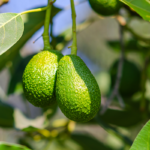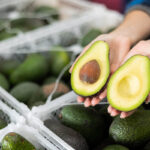Ecuadorian dragon fruit exports soar to U.S. in first year

The U.S. has become Ecuador's second-largest dragon fruit market within its first year of exporting, according to Quito-based Agricola Pitacava.
Production manager Gustavo Narvaez said his company shipped 40 metric tons (MT) of the tropical fruit, also known as pitahaya, to the North American country over the last season.
68MT was sent to Ecuador's leading market, Hong Kong, he said.
U.S. authorities granted market access in June 2017, with the first exports taking place in September.
"It (the U.S. market) was better than what we had expected, and it grew really fast," Narvaez told Fresh Fruit Portal.
"Pitahaya has a very big acceptance in the market, and I think that is mainly because a lot of people from Asia now live in the U.S. They know the red dragon fruit, and they now like the yellow pitahaya."
For Agricola Pitacava, its exports to the U.S. stand at slightly more than 18% of its total volume of exports (220MT) to all its market, which also include the Netherlands, Canada, Hong Kong, Singapore, and Malaysia.
According to Narvaez, the export volume to the U.S. in the first year is unprecedented. He explained it had taken five years for Hong Kong to become the company's top export market after it opened in 2013.
"I think that the U.S. market will continue growing because it is a huge market ... and people have higher incomes. This is important as pitahayas is considered one of the most expensive fruits," he said.
According to Narvaez, a pitahaya often costs around US$8 per pound in the U.S., whereas in Hong Kong and Europe the pitahayas are sold by per piece - HKD69 (US$8.80) per fruit in Hong Kong and €8 - 10 (US$9 - 11.50) per fruit in Europe.
Regional consumer preferences
The representative went onto explain that consumer preferences vary widely between the west and the east.
"In Asia (Hong Kong, Singapore and Malaysia), they have a preference for bigger fruit, of 300g and above," he said.
"But in the States, they don’t have a preference for (pitahaya) sizes yet - they still accept little sizes from 180g to the big fruit that could be 450g."
But in Europe, particularly in the Netherlands, sizing preference leans towards the smaller sizes..
"The good thing in the Netherlands is that they like the little sizes that Asians don’t like, between 180g to 250g, so you don’t have to choose what fruit to send," said Narvaez.
Meanwhile, the Canadian market preference is a mix of the west and the east, he said.
"For Canada, there are only two places to send fruit to – Toronto and Vancouver. And they are totally different. There are many Asians in Vancouver and they like the bigger-sized fruit like Hong Kong," Narvaez revealed.
Narvaez also said that most of the pitahaya consumers in North America are of Asian descent, especially those that have previously tried the red dragon fruit - which is common in Asian cuisine.
The Chinese market
Ecuador doesn't have access to the Chinese pitahaya market, and there has been much industry speculation as to when this might happen.
"Most people are expecting the Chinese market to open this year, I don’t think it will happen that fast," said Narvaez.
"For the U.S. market it took five years, and China has only been in this process for 1.5 to 2 years, so I think it will take at least 1 more year."
According to Narvaez, even though Chinese officials had visited Ecuador in October last year to inspect the plantations, both Ecuadorian and Chinese authorities have not yet finalized a protocol that could allow Ecuadorian pitahayas to be exported to China.
But the company - which was the first company in Ecuador to send to Hong Kong and Singapore when they opened - has already started planting production in anticipation of the opening of the Chinese market.
"For example, we have 20 hectares of land for now and we planted 10 more hectares, which will start producing fruit in two more years," he said.
Also, in light of Asian consumer preferences, the company has also switched from producing smaller-sized pitahayas to producing a new and larger variety called Palora.
But given the rise of the U.S. market, where does China stand in terms of market share? For Narvaez, he is sure the future of Ecuadorian pitahayas lies in China.
"I think the biggest market (in future) will be mainland China, because its population is so much more than the U.S., and China is growing a lot economically so people will want to try fruit that is expensive," shared Narvaez.
"Also, you have the advantage that Asians already like pitahayas, in the U.S. people are just starting to know the fruit and to try it."















































